The wait is over: Snøhetta’s new SFMoMA addition is about to open its doors

After three years of waiting, the time has arrived. The San Francisco Museum of Modern Art (SFMoMA) is getting ready to kick open the doors to its ten-story expansion by the architecture firm Snøhetta on 14 May.
The Bay Area’s fog and water inspired the new edifice's sweeping and sinewy east facade, made with 700 uniquely molded, fibreglass-reinforced polymer panels. The silvery structure is a stark departure from the red brick-ensconced existing building, by Mario Botta.
'Buildings are like dancing partners,' says Snøhetta co-founder Craig Dykers. 'You don’t want to repeat what the other is doing because you’ll step on their toes.' The two structures are connected by a seismic joint that visitors can see through glass viewers, but the boundary doesn’t draw attention to itself, as the two buildings flow as one without obvious demarcations. Moving between the buildings, Dykers says, 'shouldn’t be a jarring experience, but the museum-goers will have some awareness'.
As opposed to the formally predictable symmetry of Botta’s design, for instance, the new building features more versatile exhibition spaces. (Check out the room in the new wing displaying Agnes Martin paintings, which curators configured to be an octagonal space.)
At 235,000 sq ft, the Snøhetta addition more than doubles the museum’s total space. But the new landmark weighs less than the old structure by employing materials like lightweight cement and sand from nearby Monterey Bay. On track to receive LEED Gold certification, the new gallery spaces use energy-saving ambient LED lighting tucked above undulating ceiling panels calibrated to avoid light scallops.
Other notable features include six outdoor terraces, including the second-floor sculpture gallery that exhibits works by Alexander Calder against America’s largest public living wall by Habitat Horticulture, consisting of over 19,000 plants including 21 native Northern Californian species.
Spatial and metaphorical openness is among the most emphasised elements, with 43,000 sq ft earmarked for free access. Two entrances on different streets allow pedestrians to pass through the museum’s ground-floor spaces, including a glass-fronted gallery inaugurated with Richard Serra’s 235-ton sculpture Sequence. SFMoMA will soon be open, in every sense of the word.
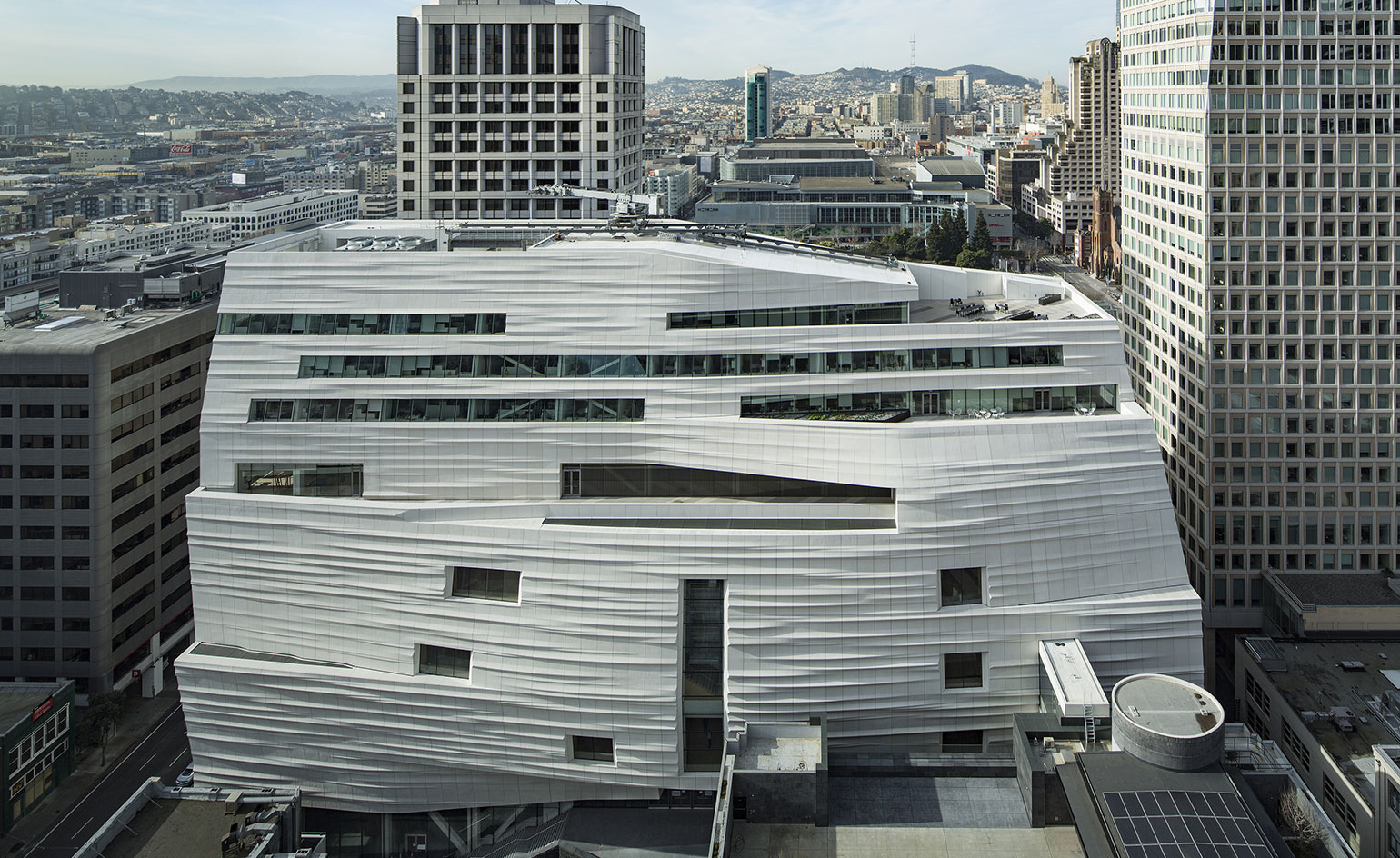
The silvery new structure is made of molded fibreglass-reinforced polymer panels. Photography: Henrik Kam. Courtesy SFMoMA
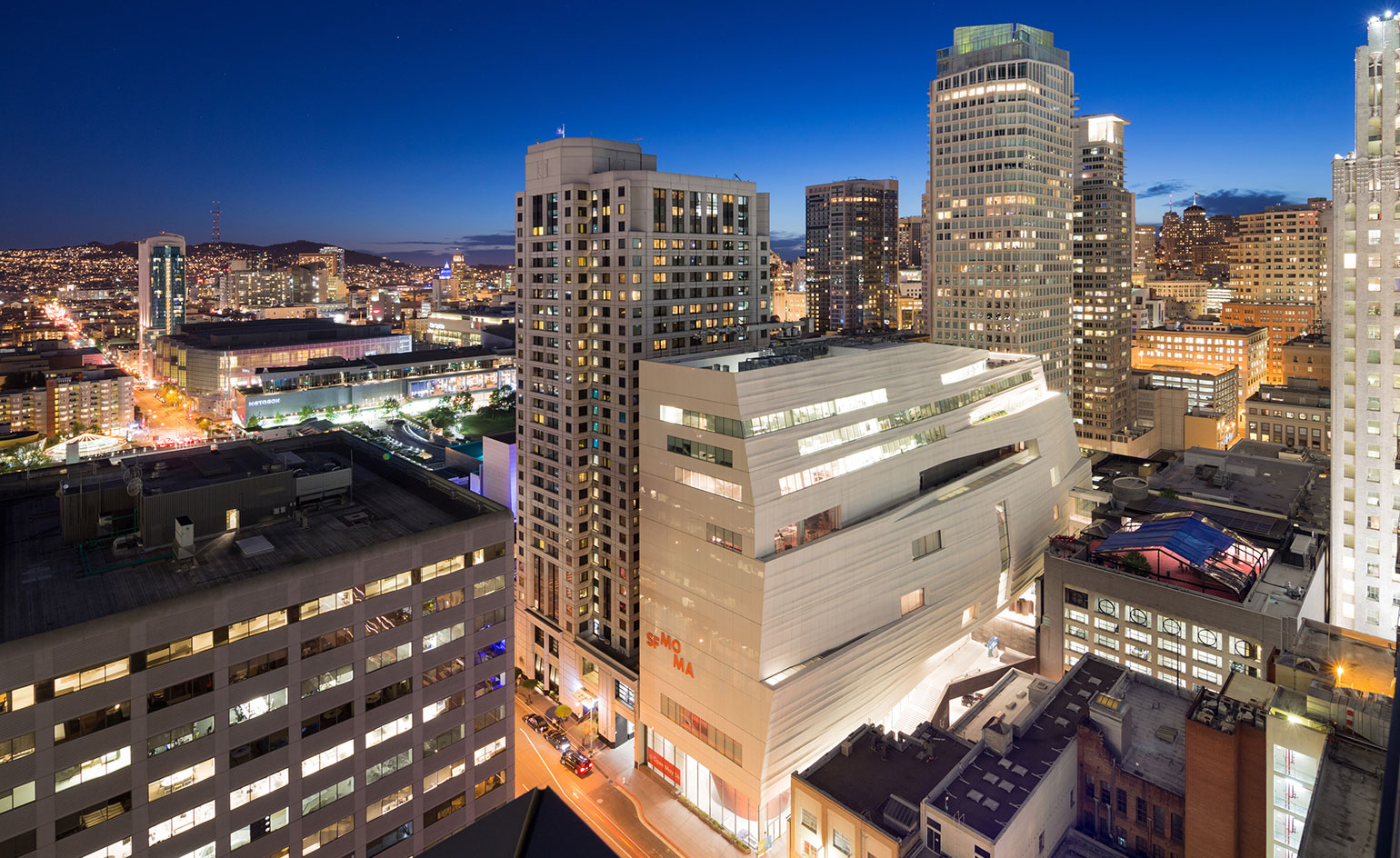
Old and new are connected by a seismic joint that remains visible to visitors when they walk through the museum. Photography: Iwan Baan. Courtesy SFMoMA
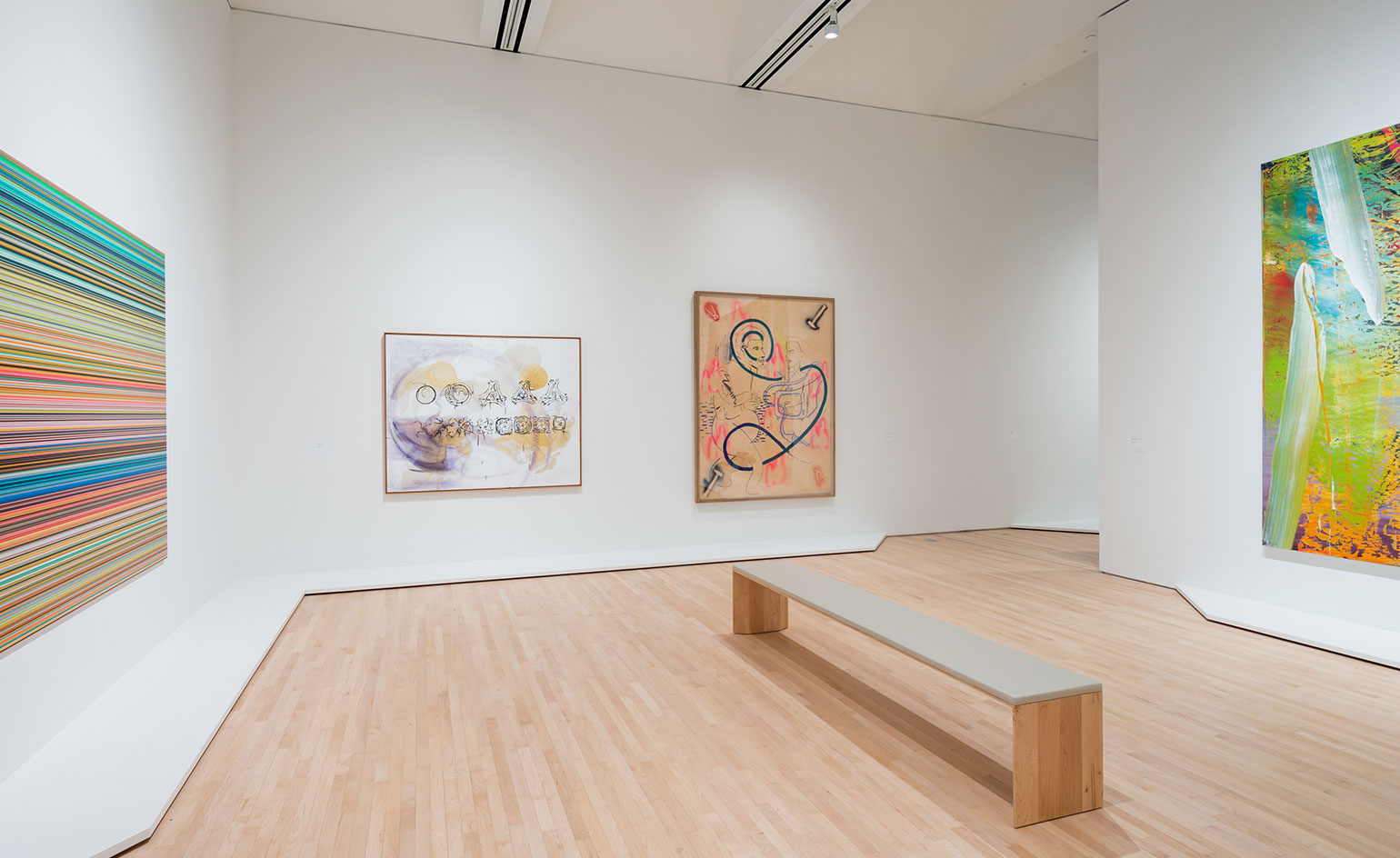
Seen here in SFMoMA’s gallery spaces is a new show, entitled ’The Campaign for Art: Modern and Contemporary’, also opening on 14 May. Photography: Iwan Baan. Courtesy SFMoMA
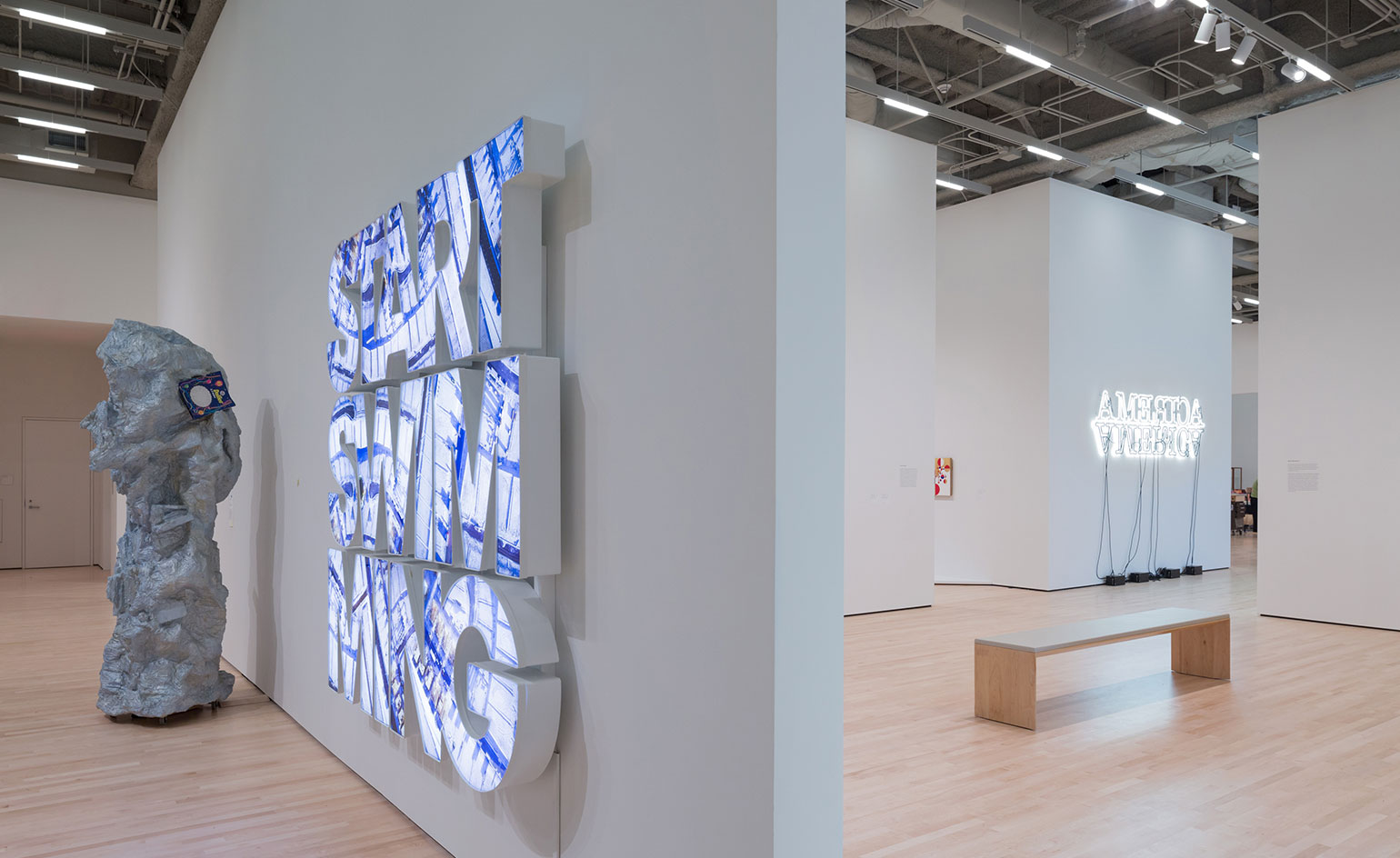
At 235,000 sq ft, the Snøhetta addition more than doubles the museum’s total space. But the new landmark weighs less than the old structure by employing materials like lightweight cement and sand from nearby Monterey Bay. Pictured: ’The Campaign for Art: Modern and Contemporary’. Photography: Iwan Baan. Courtesy SFMoMA
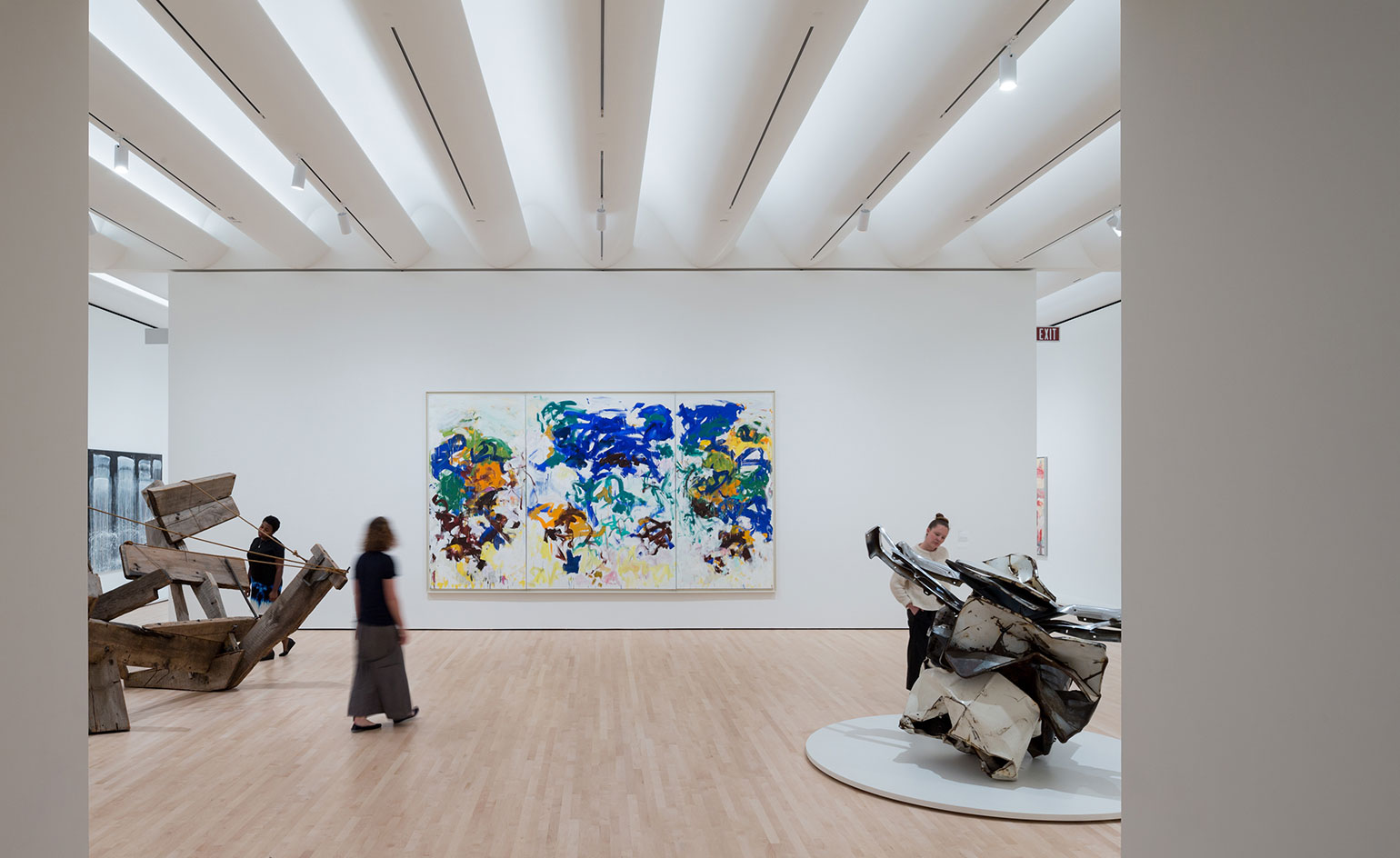
On track to receive LEED Gold certification, the new gallery spaces use energy-saving ambient LED lighting tucked above undulating ceiling panels calibrated to avoid light scallops. Pictured: install of ’Approaching American Abstraction: The Fisher Collection’, another launch show. Photography: Iwan Baan. Courtesy SFMoMA
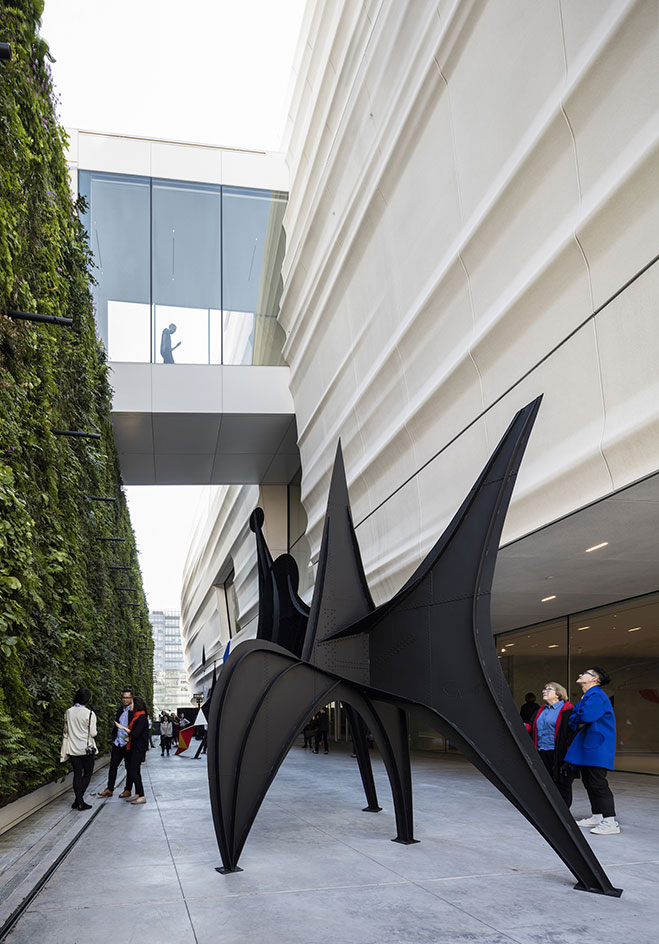
Outside spaces include the Pat and Bill Wilson Sculpture Terrace, that holds works by Alexander Calder and America’s largest public living wall, by Habitat Horticulture. Pictured centre: Maquette for trois disques (three disks), formerly ‘man’, by Alexander Calder, 1967. Photography: Henrik Kam, courtesy SFMOMA
INFORMATION
For more information, visit Snøhetta's website
ADDRESS
San Francisco Museum of Modern Art
151 3rd Street
San Francisco, CA 94103
Wallpaper* Newsletter
Receive our daily digest of inspiration, escapism and design stories from around the world direct to your inbox.
-
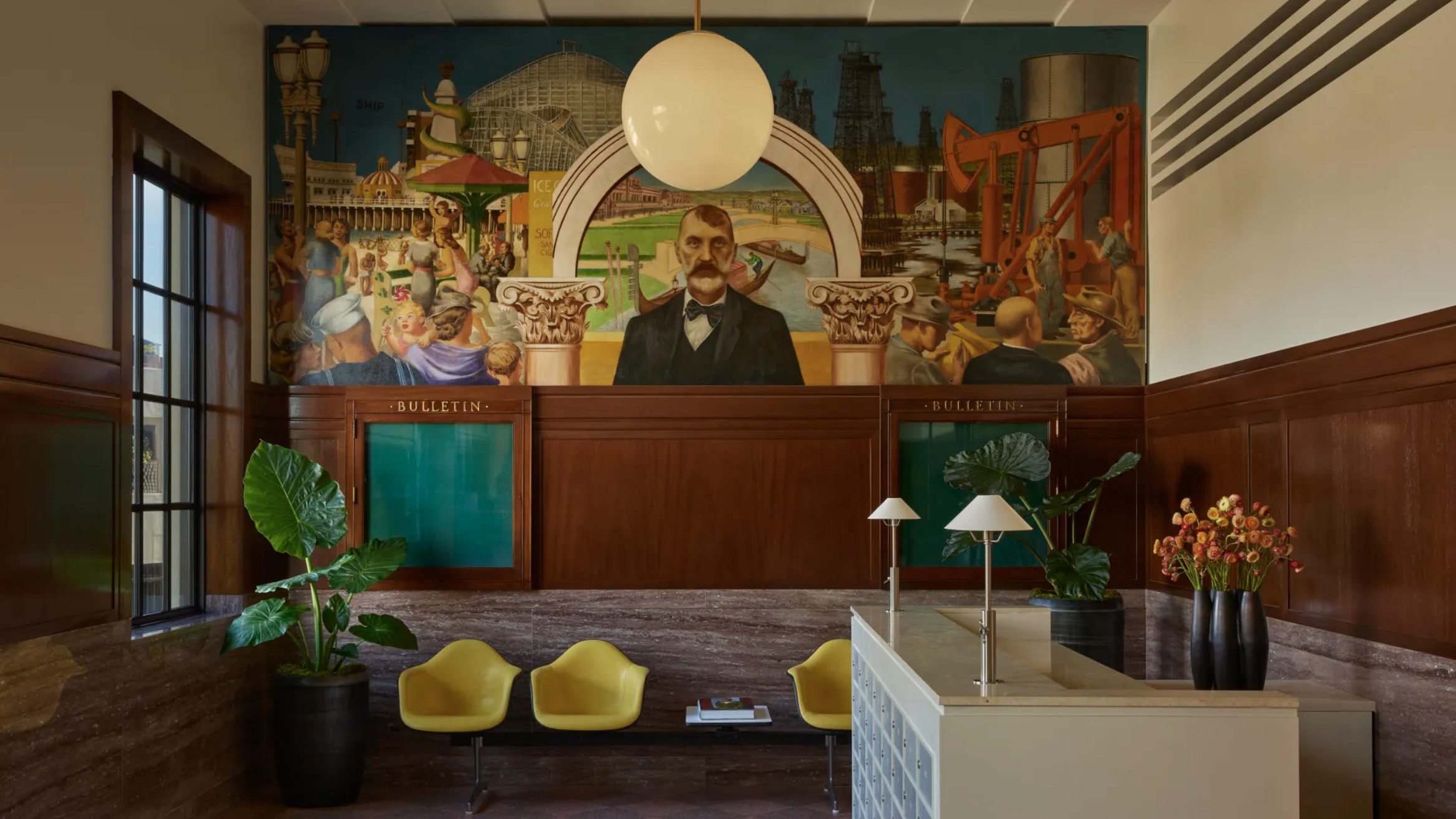 The Lighthouse draws on Bauhaus principles to create a new-era workspace campus
The Lighthouse draws on Bauhaus principles to create a new-era workspace campusThe Lighthouse, a Los Angeles office space by Warkentin Associates, brings together Bauhaus, brutalism and contemporary workspace design trends
By Ellie Stathaki
-
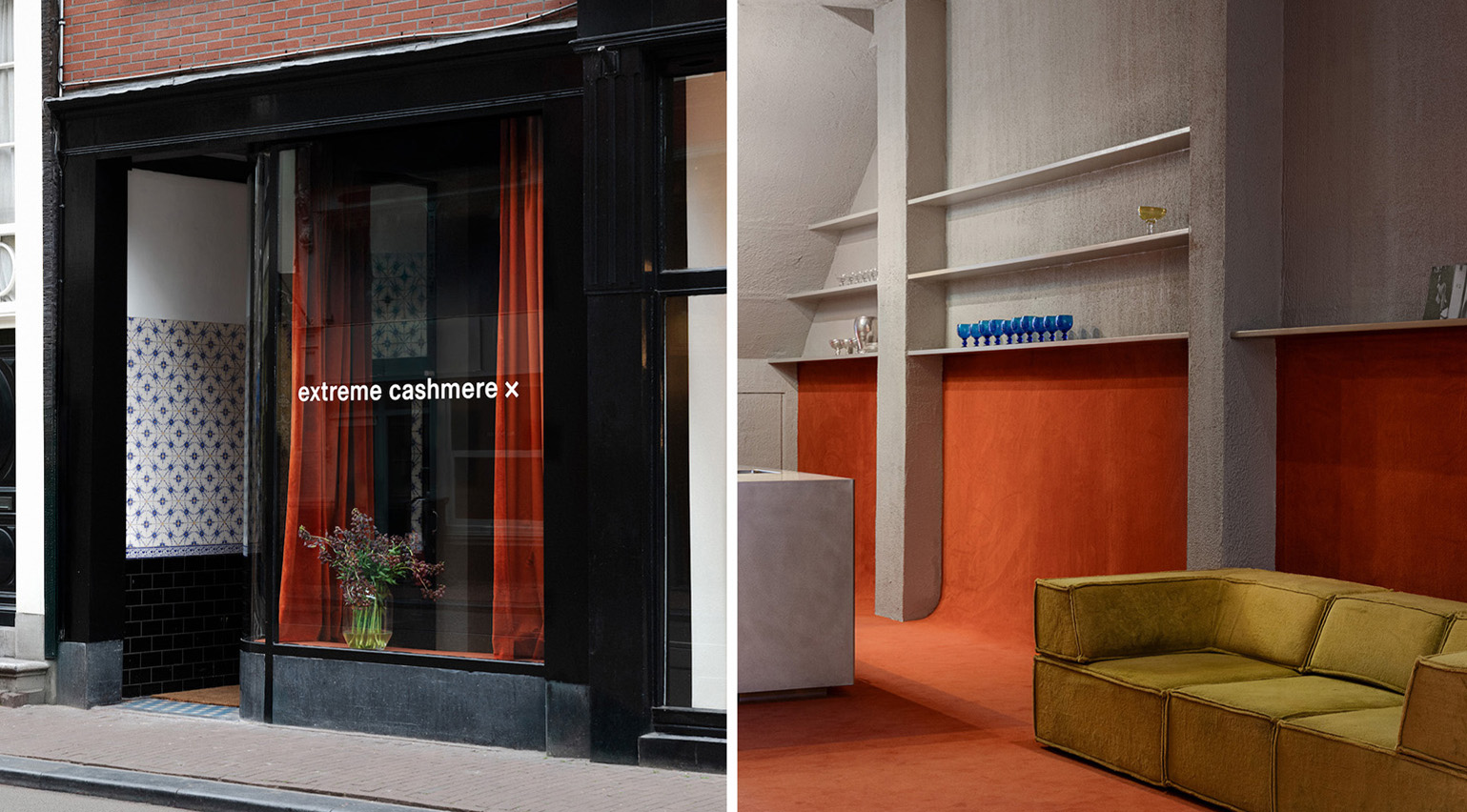 Extreme Cashmere reimagines retail with its new Amsterdam store: ‘You want to take your shoes off and stay’
Extreme Cashmere reimagines retail with its new Amsterdam store: ‘You want to take your shoes off and stay’Wallpaper* takes a tour of Extreme Cashmere’s new Amsterdam store, a space which reflects the label’s famed hospitality and unconventional approach to knitwear
By Jack Moss
-
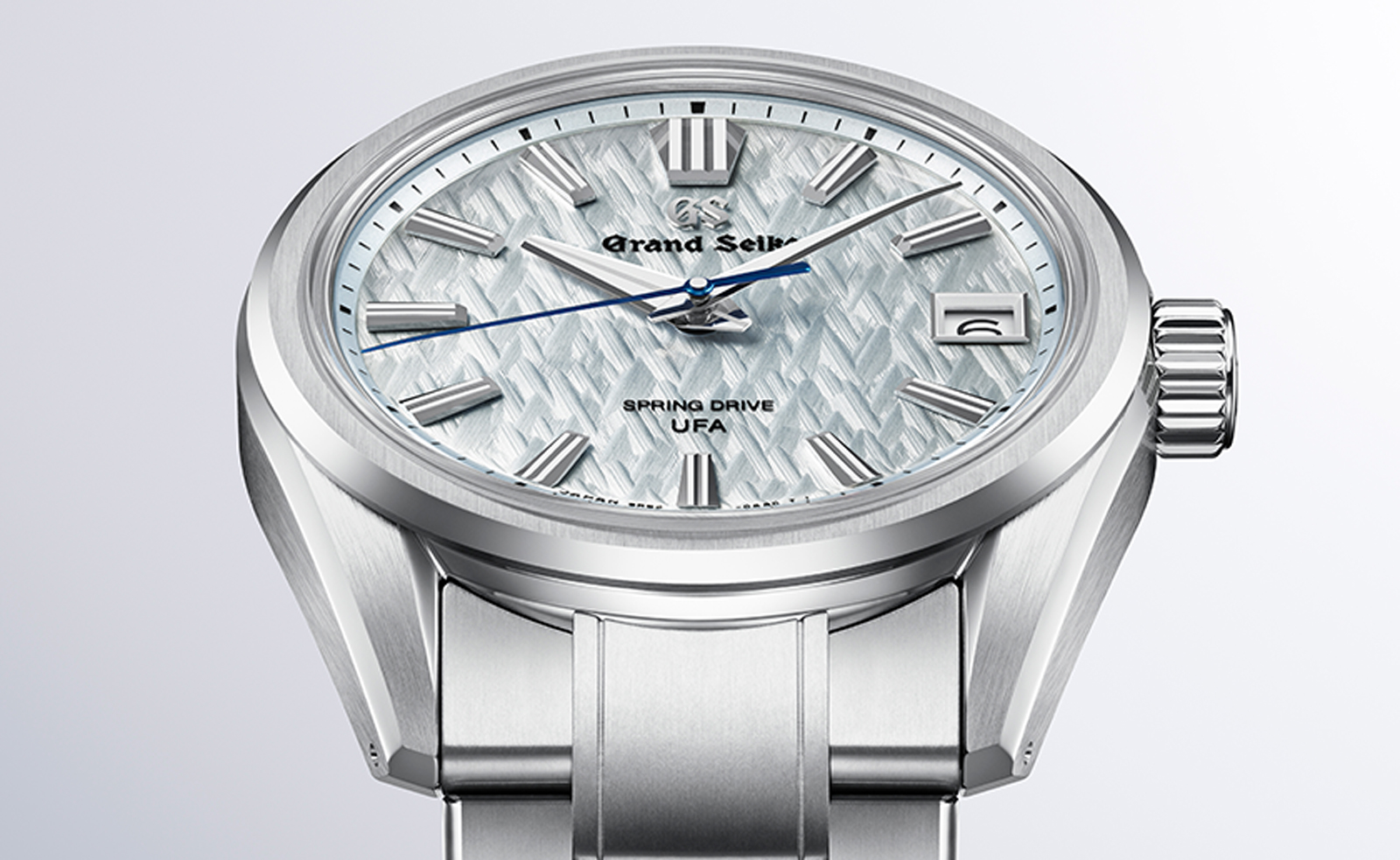 Titanium watches are strong, light and enduring: here are some of the best
Titanium watches are strong, light and enduring: here are some of the bestBrands including Bremont, Christopher Ward and Grand Seiko are exploring the possibilities of titanium watches
By Chris Hall
-
 The Lighthouse draws on Bauhaus principles to create a new-era workspace campus
The Lighthouse draws on Bauhaus principles to create a new-era workspace campusThe Lighthouse, a Los Angeles office space by Warkentin Associates, brings together Bauhaus, brutalism and contemporary workspace design trends
By Ellie Stathaki
-
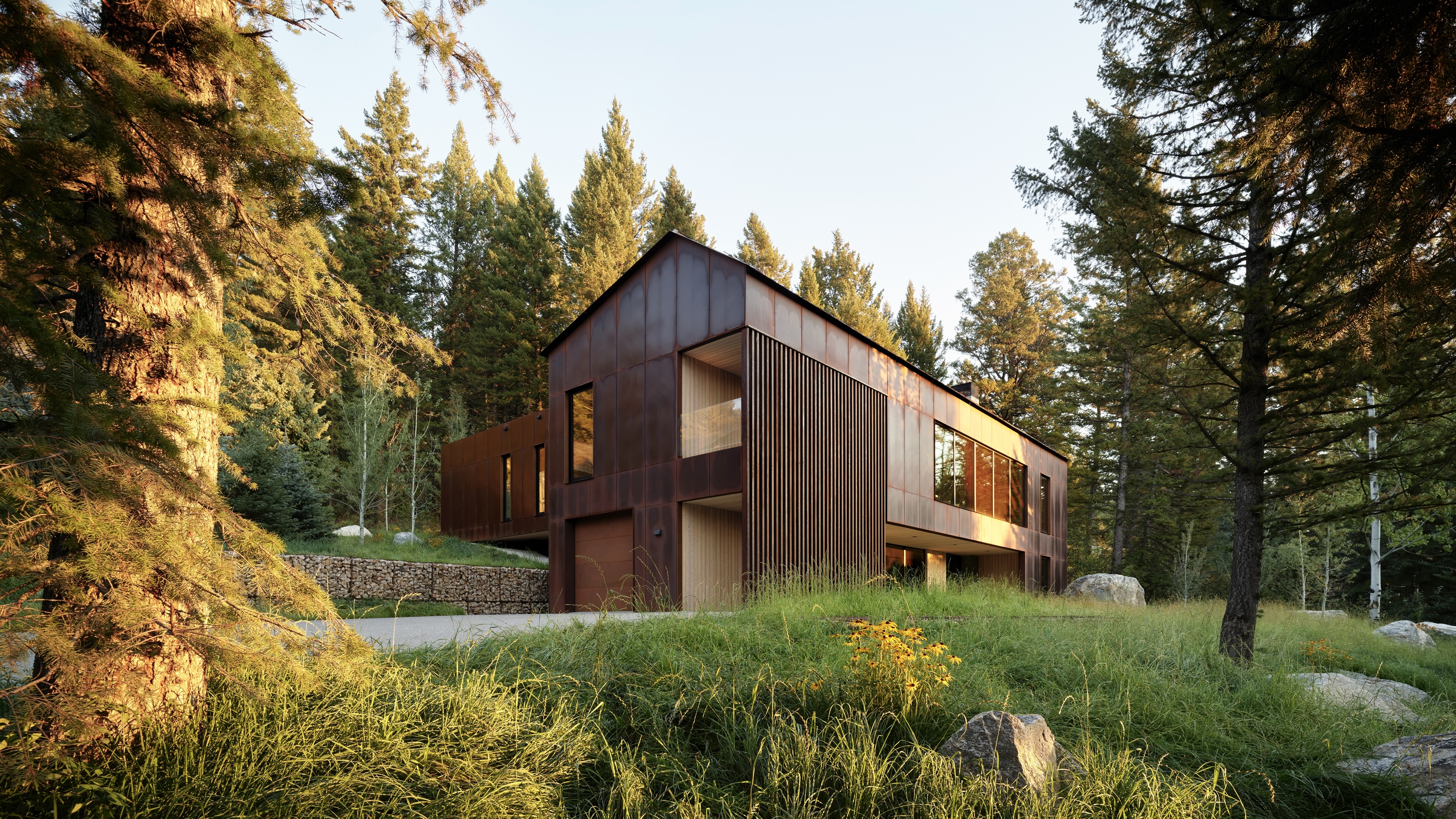 This minimalist Wyoming retreat is the perfect place to unplug
This minimalist Wyoming retreat is the perfect place to unplugThis woodland home that espouses the virtues of simplicity, containing barely any furniture and having used only three materials in its construction
By Anna Solomon
-
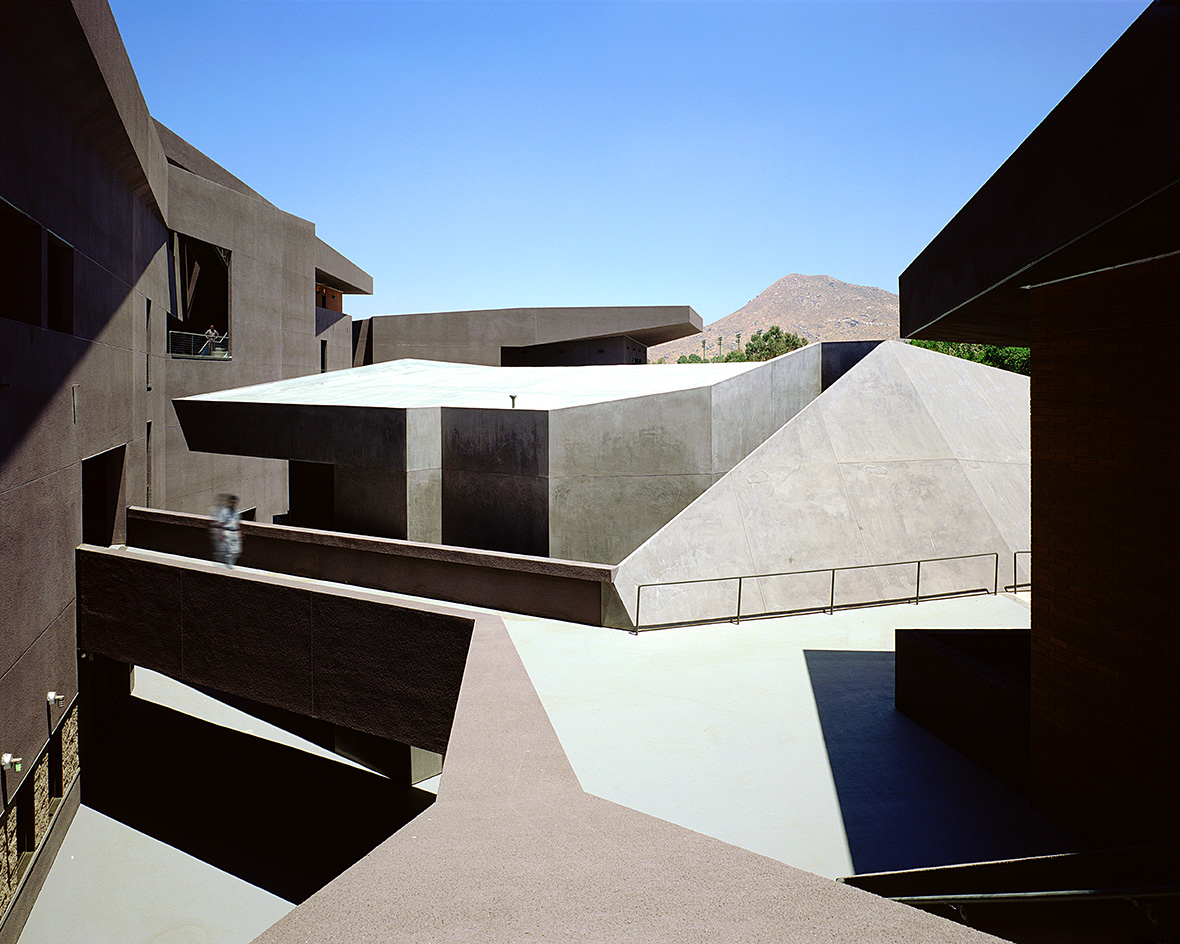 We explore Franklin Israel’s lesser-known, progressive, deconstructivist architecture
We explore Franklin Israel’s lesser-known, progressive, deconstructivist architectureFranklin Israel, a progressive Californian architect whose life was cut short in 1996 at the age of 50, is celebrated in a new book that examines his work and legacy
By Michael Webb
-
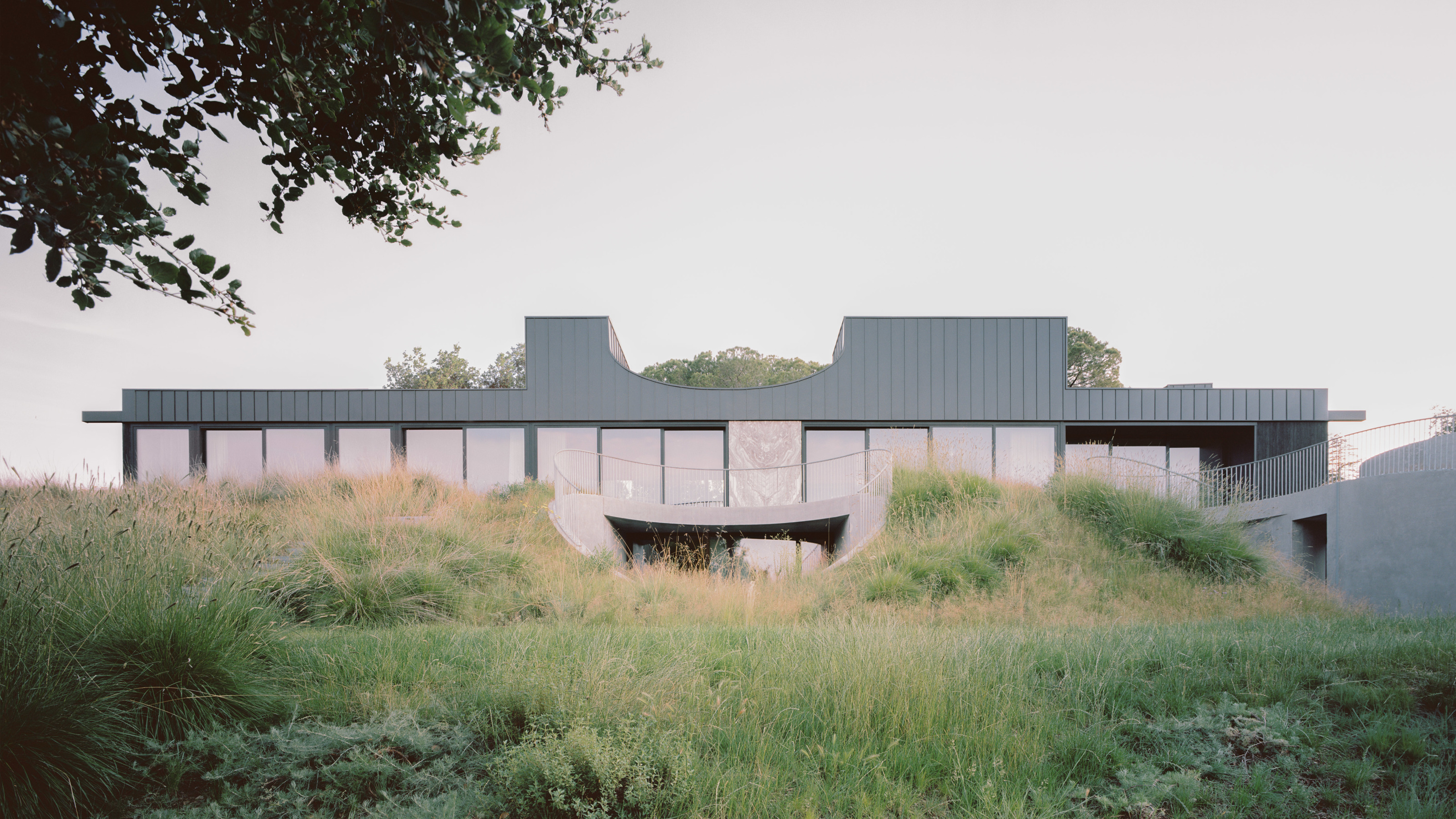 A new hilltop California home is rooted in the landscape and celebrates views of nature
A new hilltop California home is rooted in the landscape and celebrates views of natureWOJR's California home House of Horns is a meticulously planned modern villa that seeps into its surrounding landscape through a series of sculptural courtyards
By Jonathan Bell
-
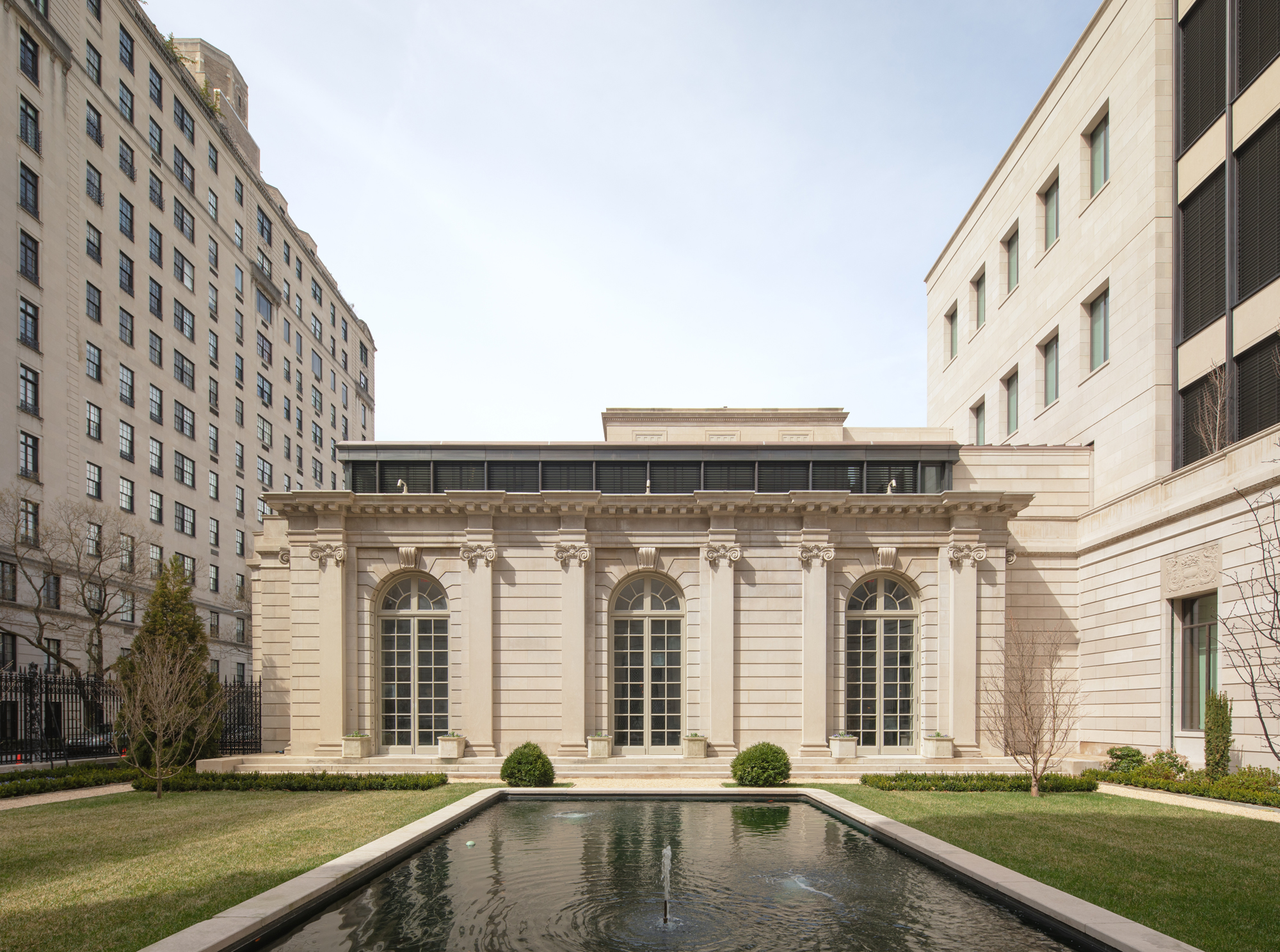 The Frick Collection's expansion by Selldorf Architects is both surgical and delicate
The Frick Collection's expansion by Selldorf Architects is both surgical and delicateThe New York cultural institution gets a $220 million glow-up
By Stephanie Murg
-
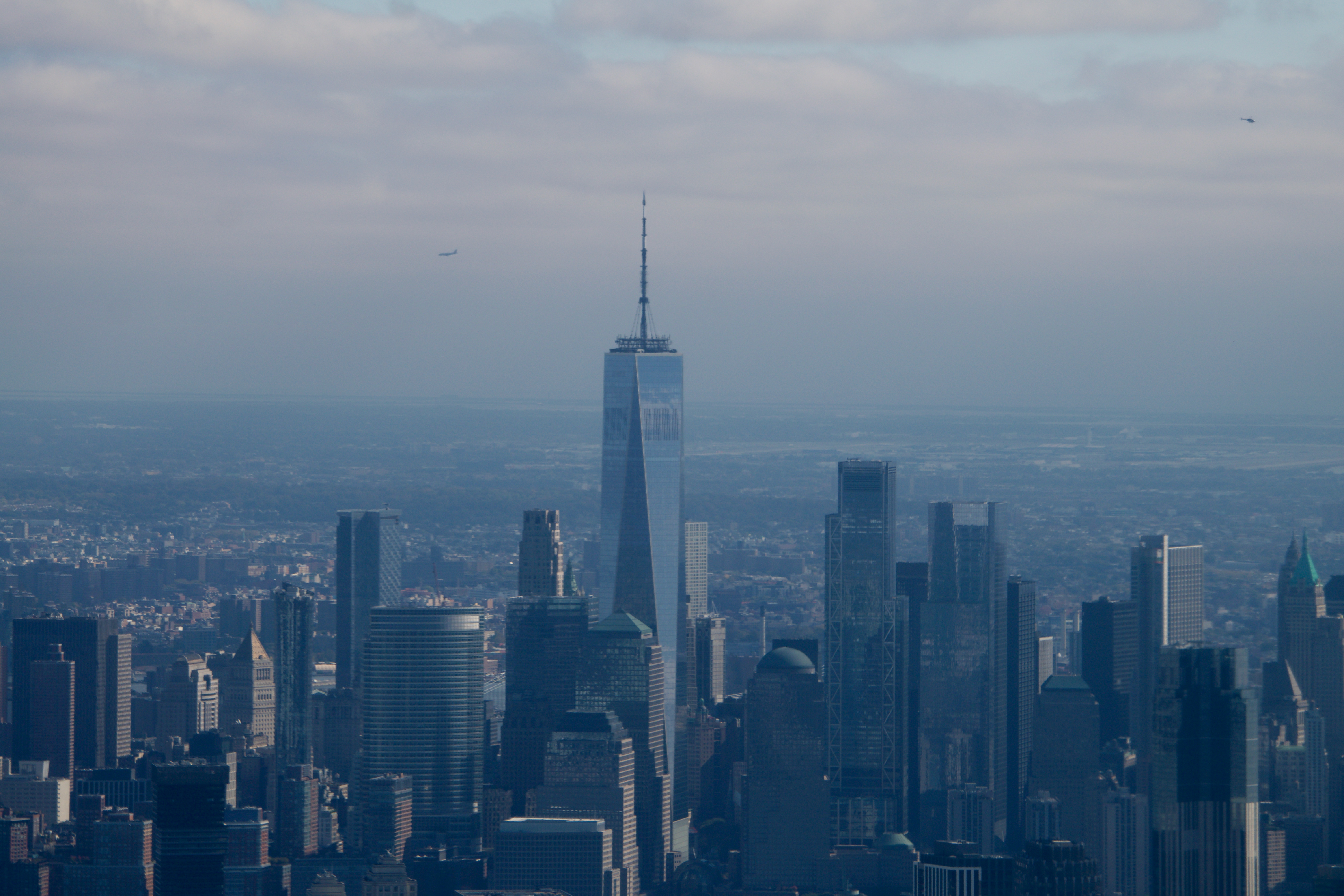 Remembering architect David M Childs (1941-2025) and his New York skyline legacy
Remembering architect David M Childs (1941-2025) and his New York skyline legacyDavid M Childs, a former chairman of architectural powerhouse SOM, has passed away. We celebrate his professional achievements
By Jonathan Bell
-
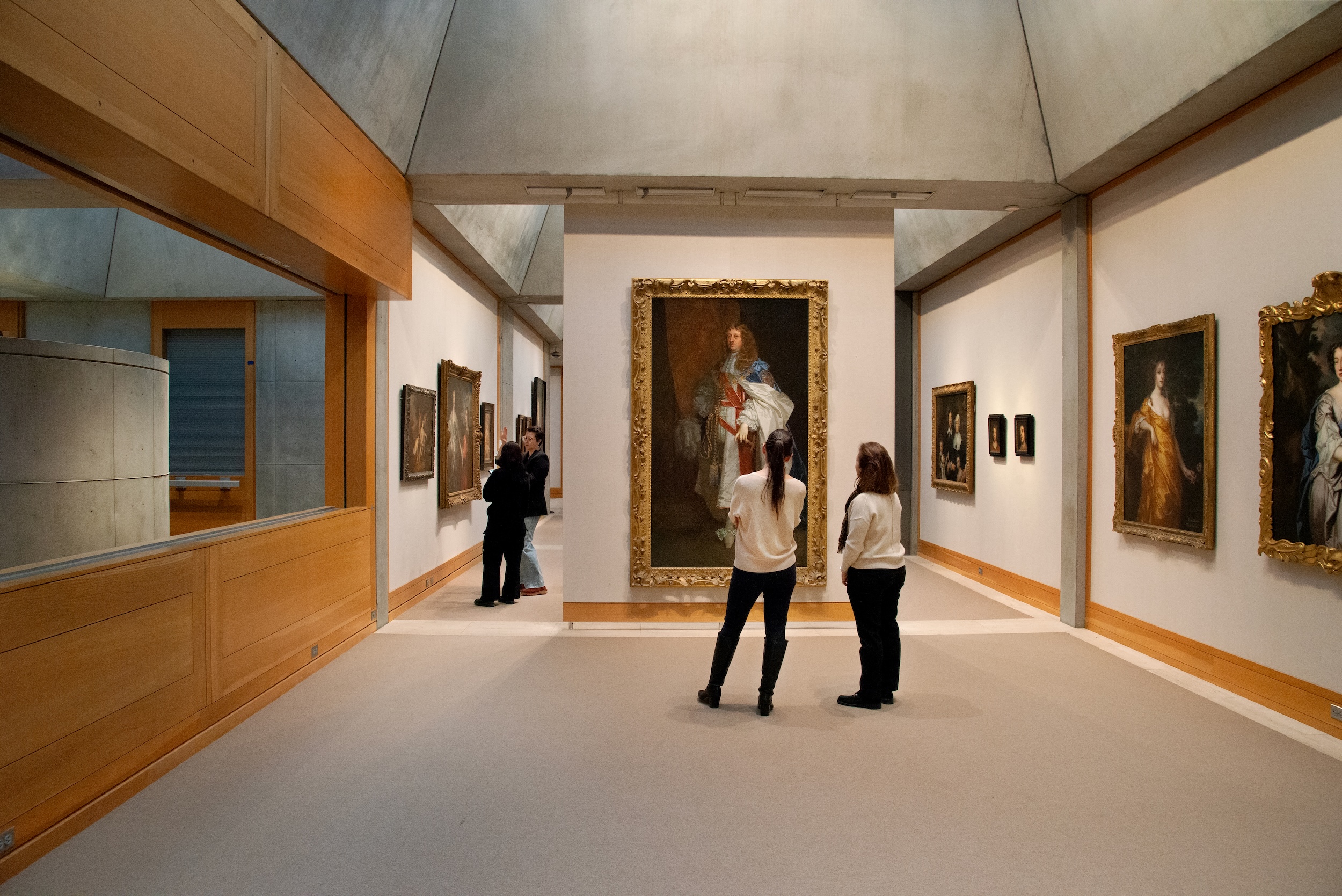 The Yale Center for British Art, Louis Kahn’s final project, glows anew after a two-year closure
The Yale Center for British Art, Louis Kahn’s final project, glows anew after a two-year closureAfter years of restoration, a modernist jewel and a treasure trove of British artwork can be seen in a whole new light
By Anna Fixsen
-
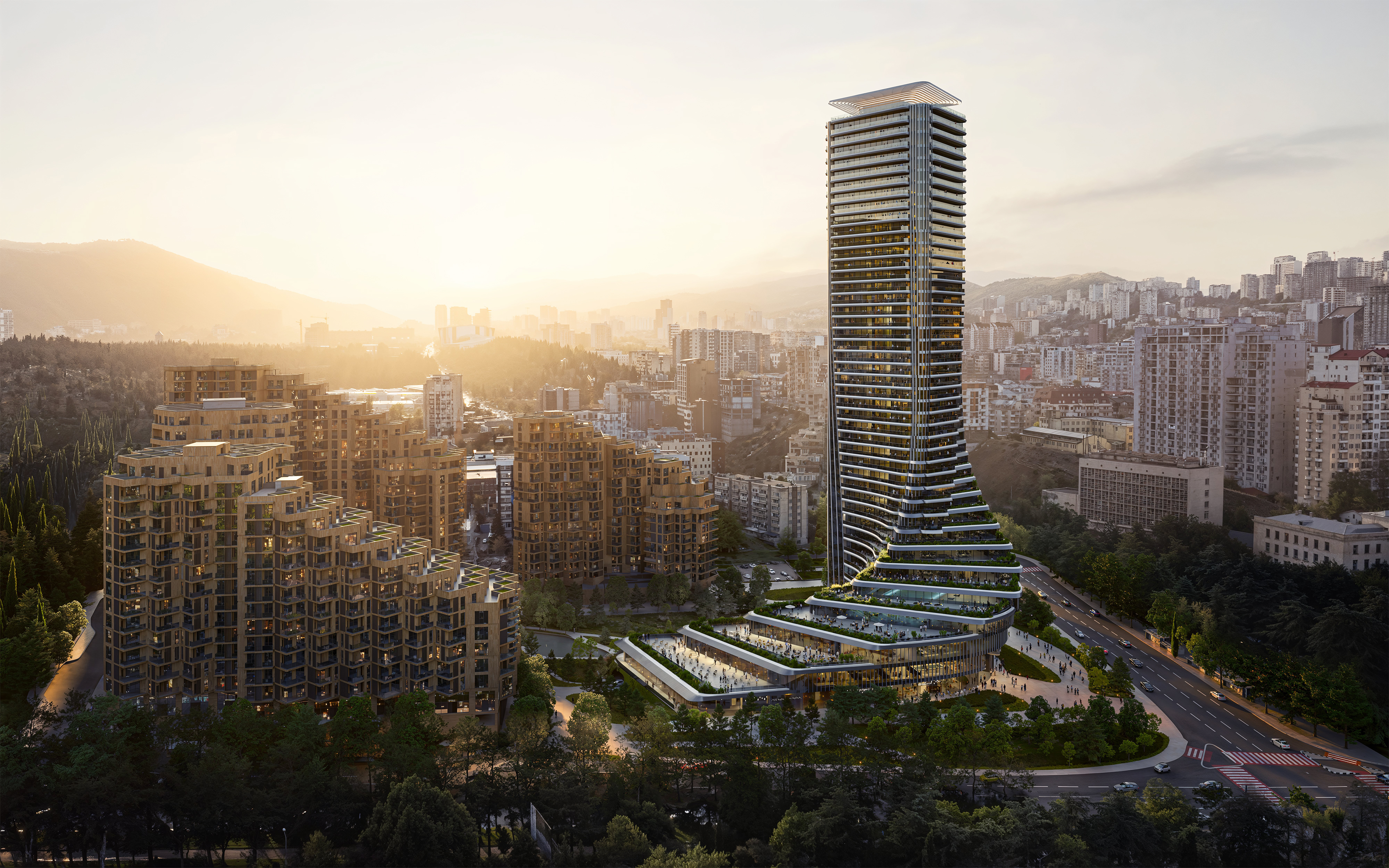 The upcoming Zaha Hadid Architects projects set to transform the horizon
The upcoming Zaha Hadid Architects projects set to transform the horizonA peek at Zaha Hadid Architects’ future projects, which will comprise some of the most innovative and intriguing structures in the world
By Anna Solomon